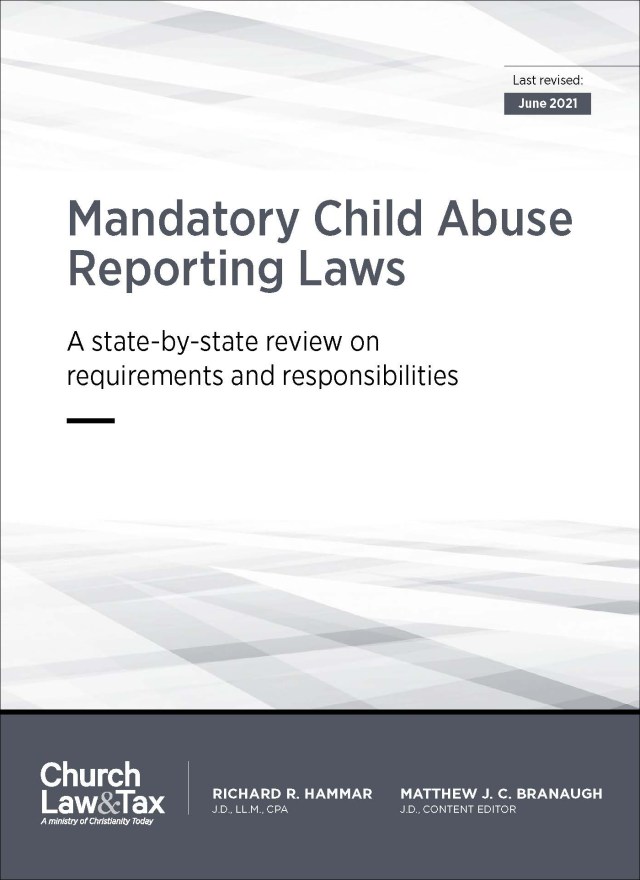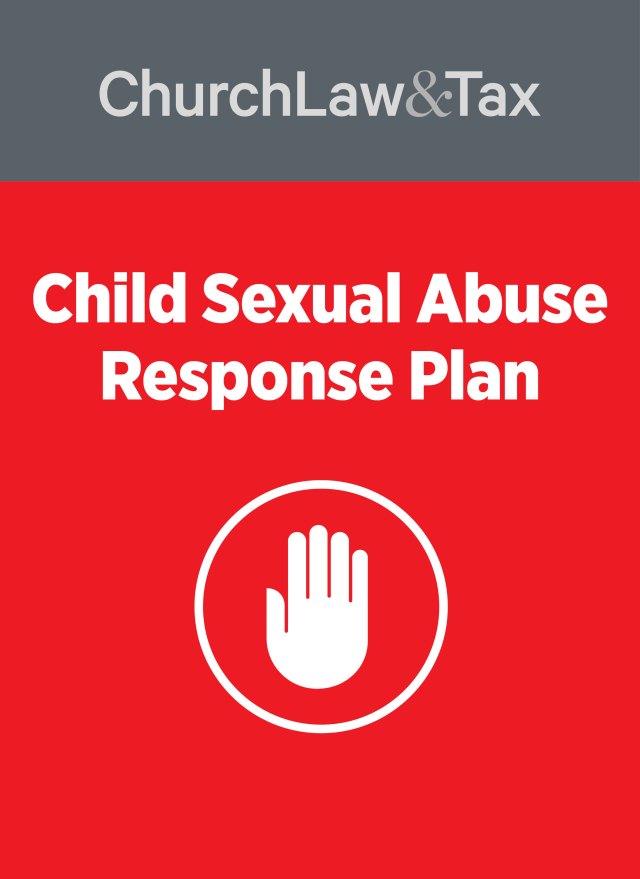• Key point 10-16.4. The statute of limitations specifies the deadline for filing a civil lawsuit. Lawsuits cannot be brought after this deadline has passed. There are a few exceptions that have been recognized by some courts: (1) The statute of limitations for injuries suffered by a minor begins to run on the minor’s 18th birthday. (2) The statute of limitations does not begin to run until an adult survivor of child sexual molestation “discovers” that he or she has experienced physical or emotional suffering as a result of the molestation. (3) The statute of limitations does not begin to run until an adult with whom a minister or church counselor has had sexual contact “discovers” that his or her psychological damages were caused by the inappropriate contact. (4) The statute of limitations is suspended due to fraud or concealment of a cause of action.
A South Carolina court ruled that an adult woman who claimed that she had been molested as a child at a church-operated preschool was not barred by the statute of limitations from suing the church for the psychological injuries she sustained. The “victim,” a minor girl, was born in 1971. From 1973 to 1976 she attended a day care center sponsored by a church. According to her mother, the victim was a very bright, articulate child. However, during the period she attended the church preschool program, her demeanor changed. She became stubborn and unhappy; experienced night terrors; and grew apprehensive about attending preschool. The victim’s mother took her to the pediatrician in response to her night terrors. The doctor, who was unaware of anything unusual happening at the preschool, advised the mother not to be concerned about the episodes. In 1976 the victim left the preschool.
Growing up, the victim continued to have “emotional disturbances and a generalized concern about sleep.” Her self concept was low. Her teachers advised her mother that she did not work up to her potential. During this time, the victim occasionally received counseling. She graduated from high school in 1989. In 1993, while attending nursing school, she began experiencing more severe emotional and psychological problems. She consulted with a physician who prescribed Prozac for the victim’s depression and obsessive thoughts. The victim began to see pictures in her mind of a little girl being sexually molested by an adult male. She eventually recognized the hand as her own. She recollected the particular dress she was wearing during an episode of abuse. She and her mother saw, in old family films which had not been viewed for a number of years, a yellow dress matching the description given by the victim.
The victim recalled particular physical characteristics of the abuser: crooked teeth, bushy eyebrows, and frizzy hair. She visited each of the locations where she had attended preschool and felt a “strong reaction.” One night she called her mother to ask if the pastor at the church had bushy eyebrows and frizzy hair. Upon review of a series of photographs, she had a “strong reaction” to a picture of one individual who had bushy eyebrows and frizzy hair. The victim remembered her abuser warning her if she told about the abuse she would be “overtaken by the devil.”
In 1995 the victim sued the church that operated the preschool. She alleged that the church was legally responsible for her injuries on the basis of invasion of privacy, negligent supervision, and breach of warranty. She claimed the abuser removed her from supervised rest periods to molest her. In response, the church alleged that all the victim’s claims were barred because they were brought after the statute of limitations had expired. Under South Carolina law, the victim had to file her lawsuit within one year of her 21st birthday. She missed this deadline by nearly two years. The trial court agreed with the church, and dismissed the lawsuit. The victim appealed.
“Repressed memory” of childhood sexual abuse
The victim claimed that she had “repressed” all memory of the acts of molestation until she was an adult, and that the statute of limitations should not have begun to run until she “discovered” that her psychological injuries were caused by the abuse. The court began its opinion with an extended discussion of repressed memory syndrome. It observed:
The premise of repressed memory is that an event occurs which is so traumatic that, in a desperate effort to cope, one’s mind dissociates itself and shuts the memory out. This is accomplished in a manner which leaves the victim completely unaware of the abuse, only to have those memories resurface perhaps years later. When an event has been dissociated, a person represses it not because she does not want to remember it, but because she cannot remember it.
Repression of memories is often a coping mechanism for children who are sexually abused. Feelings of confusion and helplessness resulting from the inability to stop the abuse or to seek outside assistance lead many victims to internalize the pain, fear, confusion, and guilt. This internalization then leads to a denial of the events and a repression of memories of the abuse incidents. Repression of traumatic memories keeps painful or unacceptable ideas, impulses, and feelings out of conscious awareness and enables the victim to survive by controlling thoughts and feelings to the point at which there is no recognition of victimization. Once the memories are subconsciously stored, the person may lead a normal life without the constant disruption of the traumatic event. Years later, however, the repression coping mechanism may backfire on the victim. Psychiatrists and clinical psychologists believe repression of traumatic memories may lead to severe depression, substance abuse, low self-esteem, suicidal tendencies, and sexual and social dysfunction …. When this survival mechanism is no longer needed, generally when the victim is an adult and no longer subject to the abuse, the memories resurface, either gradually or in sudden flashes.
Many, if not most, survivors of child sexual abuse develop amnesia that is so complete they simply do not remember they were abused at all. Children abused at an earlier age are more likely to repress than those abused at a later age. Approximately two-thirds of all incest victims report partial or complete memory repression of the sexual abuse.
The court acknowledged that an “opposing school of thought contends repressed memory theory is not scientifically valid and memories based upon this theory are neither accurate nor reliable.” However, it concluded that “repressed memories of childhood sexual abuse can exist and can be triggered and recovered.” It cautioned that “such memories can be inaccurate, may be implanted, and may be attributable to poorly trained therapists or use of improper therapeutic techniques.”
The “discovery rule”
The court next addressed the question of whether the statute of limitations can be extended in cases of child molestation on the basis of the discovery rule. It observed:
Survivors who repress their memories of sexual abuse and then recover them many years later-when they are finally able to confront them-are effectively blocked from seeking legal redress for their injuries by traditional statutes of limitations, which typically commence when the wrong is committed. These statutes provide no legal action can be maintained unless brought within a specified period of time, and, in cases of repressed memory, the victim is often unaware of the wrongful event until well after the statute of limitations has expired. While this may seem unfair or unjust on the surface, statutes of limitation were developed to prevent injustices, not to further them …. Plaintiffs should not suffer where circumstances prevent them from knowing they have been harmed …. Application of the discovery rule is an objective determination. The focus is upon the date of discovery of the injury, not the date of discovery of the wrongdoer …. The discovery rule has been applied to cases in which survivors of childhood sexual abuse have repressed the memory of the abuse. When applying the rule in cases of previously repressed memories of childhood sexual abuse, courts balance the harm of denying a remedy to a plaintiff who had no access to her memory against the hardships faced by a defendant defending against such longstanding claims.
The court conceded the “horrific possibility of false accusations.” As a result, it concluded that “objective verifiability” is required for the application of the discovery rule, and that “objective verifiability” may be satisfied by any one or more of the following kinds of corroborating evidence: (1) admission by the abuser; (2) a criminal conviction; (3) documented medical history of childhood sexual abuse; (4) contemporaneous records or written statements of the abuser, such as diaries or letters; (5) photographs or recordings of the abuse; (6) an objective eyewitness’s account; (7) evidence the abuser had sexually abused others; or (8) proof of a chain of facts and circumstances having sufficient probative force to produce a reasonable and probable conclusion that sexual abuse occurred. The court also insisted that the testimony of a psychologist or other mental health professional is required to prove the abuse and the repressed memory.
Application. This case demonstrates that churches face the possibility of being sued for acts of child molestation occurring many years or even decades ago by victims who claim that they “repressed” their memory of the molestation until recently. However, the court placed a number of limitations on such claims, including the following: (1) Adults who were molested when they were very young can more readily prove repressed memory than those who were molested when they were teenagers. (2) A psychologist or other mental health professional must testify that the victim was abused and repressed all memory of the abuse. (3) Evidence must exist that verifies the claim of abuse. The court listed eight different kinds of evidence that would satisfy this test. (4) The court conceded that not all courts have recognized repressed memory, and others do not recognize the discovery rule. Moriarty v. Garden Sanctuary Church of God, 511 S.E.2d 699 (S.C. App. 1999).
© Copyright 2000 by Church Law & Tax Report. All rights reserved. This publication is designed to provide accurate and authoritative information in regard to the subject matter covered. It is provided with the understanding that the publisher is not engaged in rendering legal, accounting, or other professional service. If legal advice or other expert assistance is required, the services of a competent professional person should be sought. Church Law & Tax Report, PO Box 1098, Matthews, NC 28106. Reference Code: m86 m67 c0200


